Introduction To Bees: The Honey Makers
Buzz, buzz, buzz, have you ever heard the sound of a bee? Bees are fascinating creatures that play a vital role in the world’s ecosystem. They are known for producing delicious honey, which is widely consumed in various parts of the world. Bees are the most important pollinators of various crops and plants, which makes them a crucial part of agriculture.
Did you know that bees are incredibly hardworking and organized? They work tirelessly throughout the day to ensure their hive is functioning correctly. Bees have a sophisticated social system where every individual plays a specific role. From collecting nectar to taking care of the young ones, bees have a well-established division of labor.
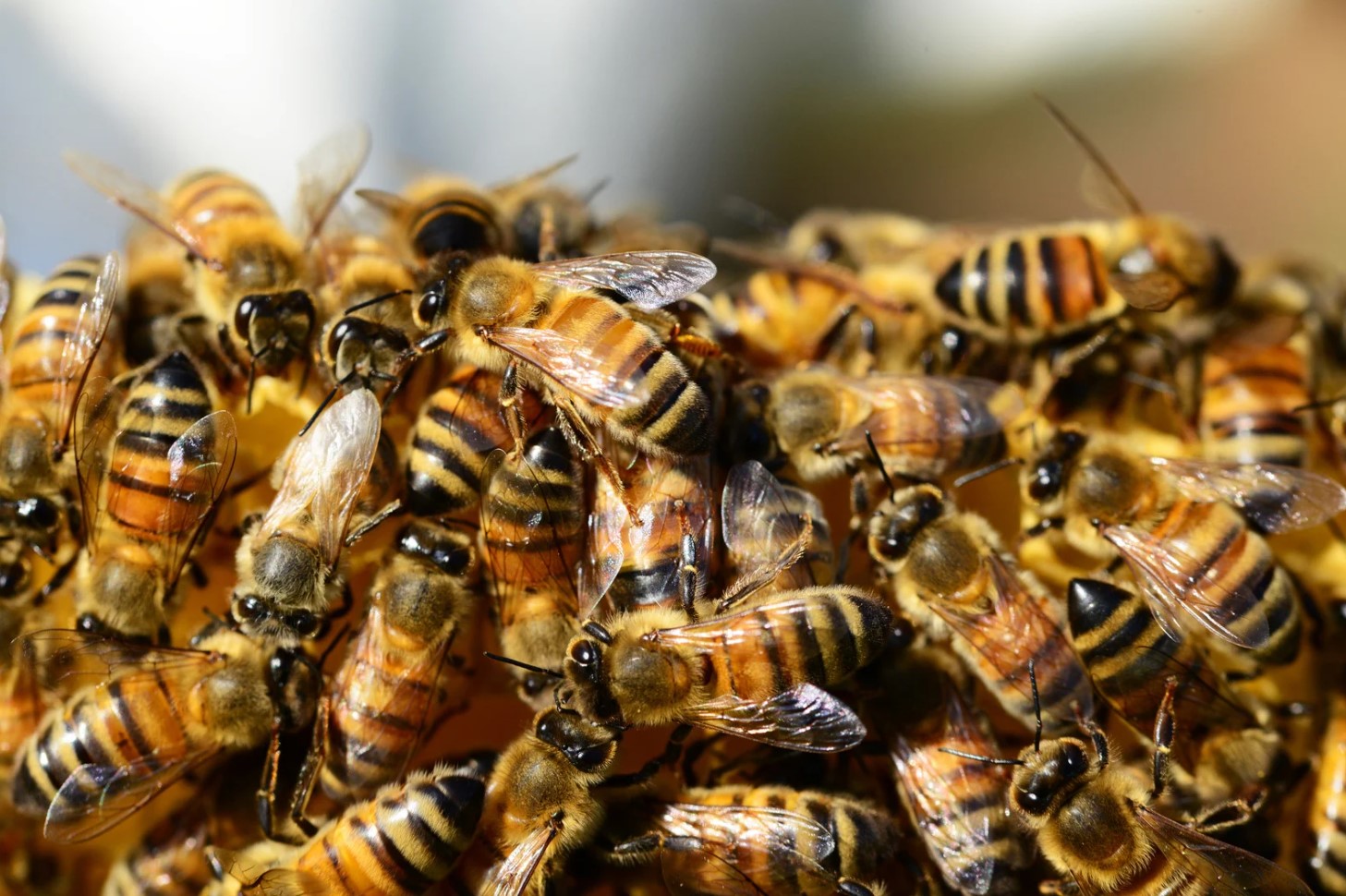
Bees come in different species, each with distinct characteristics and behavior. The most common species include honey bees, bumble bees, and stingless bees. They all have different physical characteristics and carry out specific tasks unique to their species.
- Honey bees are known for producing honey and play a crucial role in pollinating various plants.
- Bumblebees are larger in size and are excellent pollinators of tomatoes, peppers, and blueberries.
- Stingless bees are vital in maintaining the biodiversity of tropical forests.
Beekeeping is an important practice that dates back to ancient times. People have been keeping bees to harvest their honey and other products like beeswax and propolis for centuries. Maintaining colonies of bees is no easy task, and beekeepers must have the necessary skills and knowledge to keep them healthy and productive.
Bees are not only essential for their honey and other products, but they also have cultural and symbolic significance across history. For instance, ancient Egyptians viewed bees as symbols of royalty and used them in their religious ceremonies.
Without bees, the world would be a completely different place. They play a vital role in ensuring that plants and crops have a chance to reproduce and thrive. But bees face many threats, including habitat loss, pesticides, and climate change. It is essential to take measures to protect these incredible creatures to ensure their survival and continued contribution to our ecosystem and agriculture.
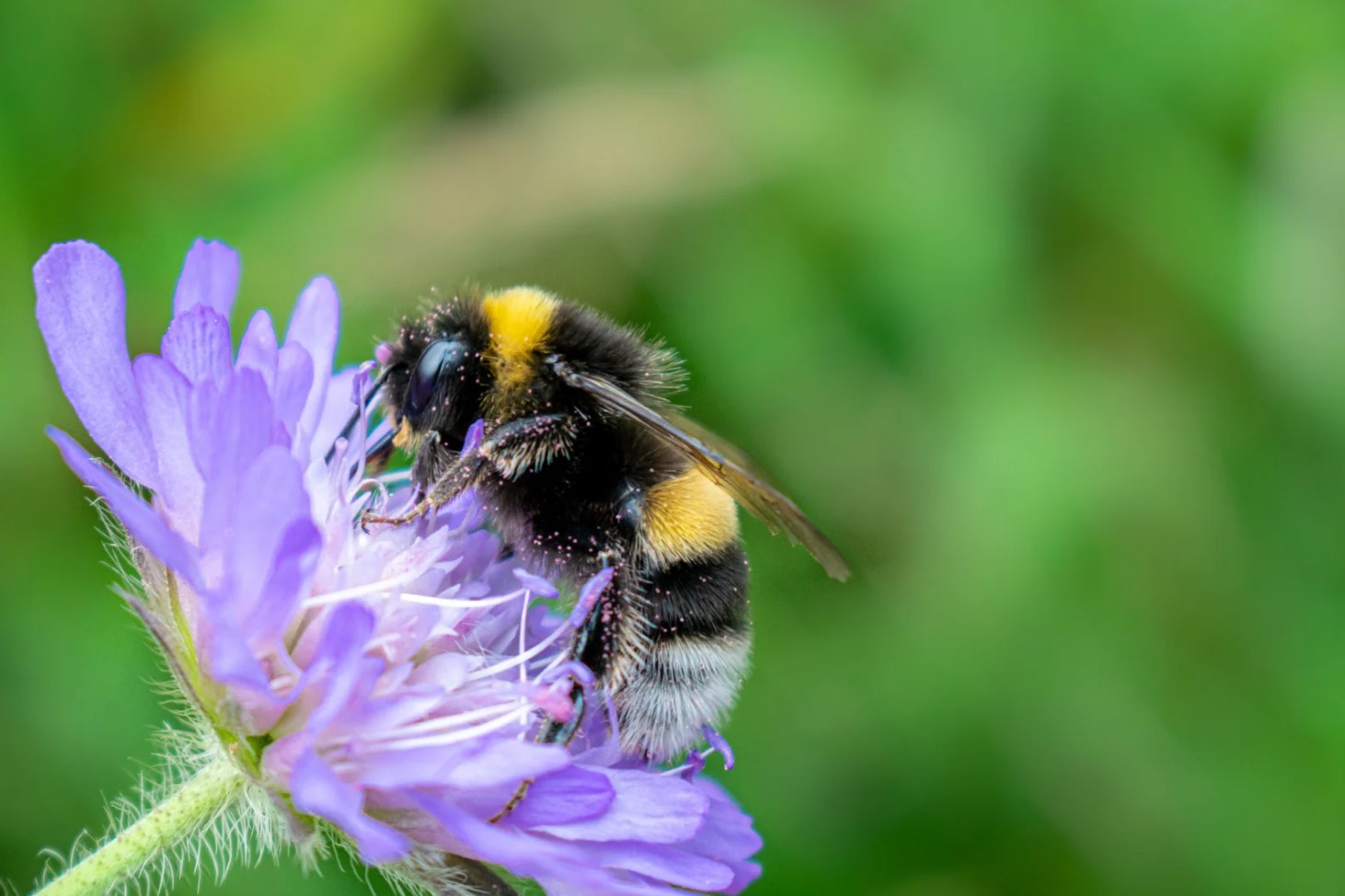
The Importance Of Bees To Ecosystems And Agriculture
Bees play a vital role in ecosystems and agriculture around the world. These little insects have a big impact on our daily lives, and without them, our food sources and plant diversity would be severely affected. Pollination is the main service that bees provide to ecosystems and agriculture. They transfer pollen from male flower parts to female flower parts, allowing plants to create seeds and reproduce. This process is essential for the growth and diversity of fruits, vegetables, and crops that we consume or use for other products.
Without bees, it would be much harder for plants to reach their full potential. Many plants rely solely on bees for pollination, and without their help, these plants would not be able to reproduce. This would lead to a decrease in plant diversity, leaving many species vulnerable to extinction. Additionally, the agriculture industry would suffer greatly. Crops such as almonds, blueberries, and apples rely heavily on bee pollination. Without it, these crops would have lower yields and lower quality fruits, ultimately resulting in higher prices for consumers.
- Aside from pollination, bees also play other important roles in ecosystems. They help to decompose organic matter, control pest populations, and provide food for other animals such as birds and mammals.
- It’s estimated that bees contribute more than $15 billion to the U.S. economy each year through crops and products such as honey, beeswax, and royal jelly.
| Type of Bee | Description |
|---|---|
| Honey Bee | Well-known for producing honey, they also play a major role in crop pollination. |
| Bumble Bee | Generally larger than honey bees, they are important pollinators for wildflowers and crops such as tomatoes and blueberries. |
| Mason Bee | They are solitary bees that are efficient pollinators for many fruit and nut trees. |
Conservation efforts are needed to protect bees and their essential role in ecosystems and agriculture. Habitat loss, pesticide use, and climate change are just a few of the threats facing bee populations worldwide.
By planting gardens with bee-friendly plants, avoiding the use of harmful pesticides, and supporting local beekeepers, we can all contribute to the conservation and protection of bees. Their importance to our ecosystem and agriculture cannot be overstated, so let’s all do our part to help keep bees buzzing for generations to come.
What Are Honey Bees And Their Physical Characteristics?
Honey bees, scientifically known as Apis mellifera, are a type of bee that belongs to the family Apidae. They are best known for their production of honey and pollination services. These bees are characterized by their physical traits, which make them different from other bee species.
Body Structure: Honey bees have segmented bodies, consisting of three parts: the head, thorax, and abdomen. Their body is covered with numerous tiny hairs, which helps them collect pollen grains from flowers. They have six legs and two pairs of wings, which allow them to fly up to six miles per hour.
- The head of a honey bee contains compound eyes, antennae, and mouthparts. The eyes are made up of thousands of tiny lenses, which enable honey bees to see ultraviolet light and polarize light.
- The thorax contains the muscles that control the movement of the wings and legs.
- The abdomen of a honey bee contains the digestive and reproductive organs.
Color: Honey bees have varying color patterns. They can be brownish-black, gray, and black with bands of yellow or orange. The coloration helps identify species and aids in their defense mechanisms. Their coloring also changes as they age.
| Gender | Coloration |
|---|---|
| Queen | Large and mostly brown with some black or orange-yellow bands |
| Worker | Smaller and darker than the queen with more black or brown coloration and smaller bands of yellow or orange |
| Drone | Larger than the worker with more rounded bodies and lighter coloration, mostly tan or yellow |
Other Physical Characteristics: Honey bees are covered in tiny hairs that help them collect pollen from flowers. They also have scent glands that allow them to communicate with other bees. Their stingers are barbed, which makes them stick in the skin of mammals, causing pain and sometimes death to the bee.
In conclusion, honey bees are fascinating creatures with unique physical characteristics. Their body structure, color, and other physical traits enable them to communicate with other bees, collect pollen, defend themselves, and create valuable products such as honey and beeswax.
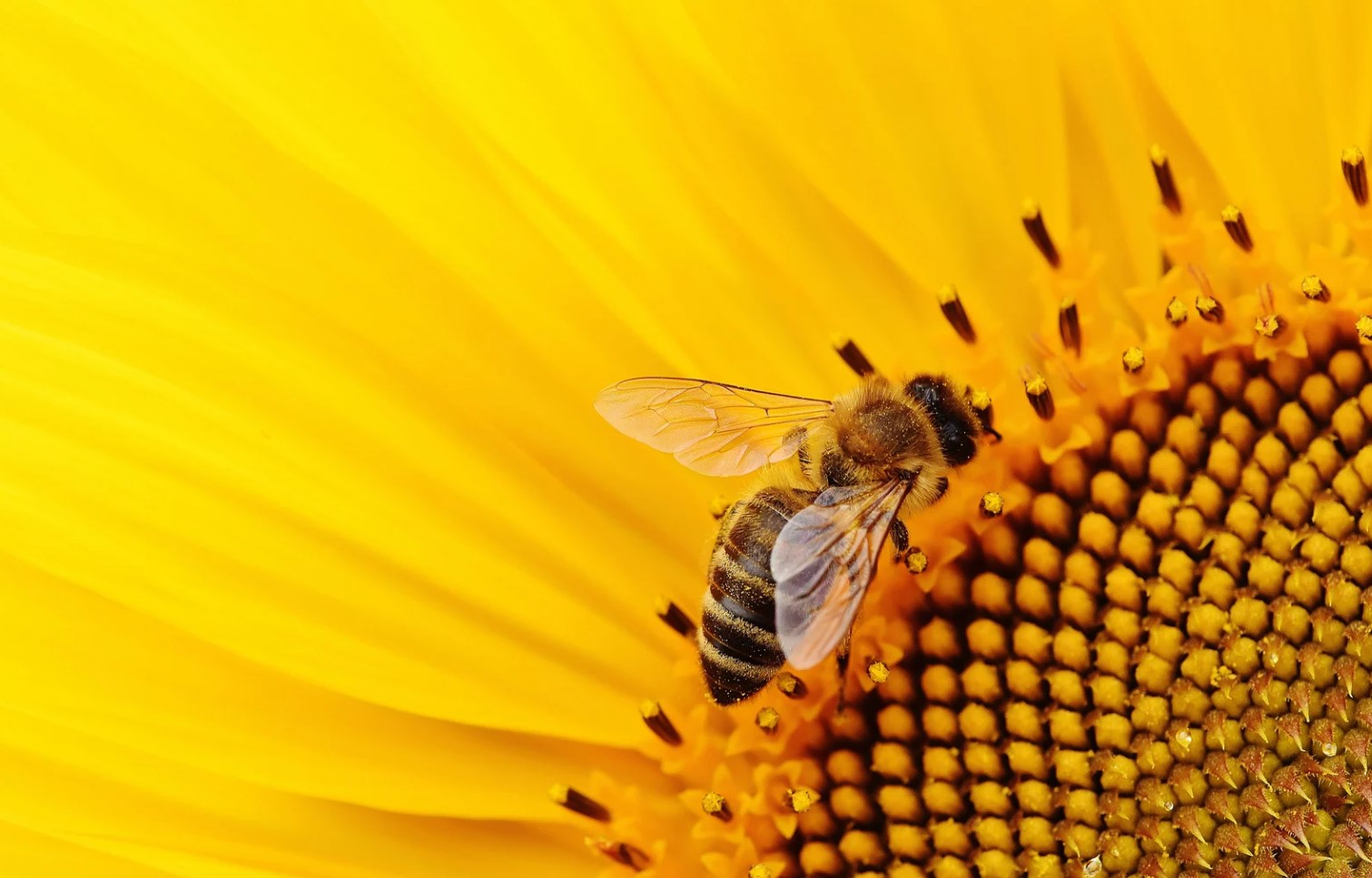
Understanding The Social Systems Of Bees: Hives And Colonies
Bees are not just a busy insect, they have a complex social system that makes them unique to other species. The social structure of bees is highly organized and hierarchical. Bees live in colonies, and these colonies are made up of a variety of bees, including drones, workers, and the queen bee.
The queen bee is the mother of all the other bees in the colony. She is the only bee that can lay eggs, and her main function is to ensure the survival of the colony through the production of new bees. The workers, on the other hand, are responsible for carrying out all of the tasks necessary to keep the colony running smoothly. They collect food, build and maintain the hive, and care for the young. Drones are the male bees in the colony, and their only function is to mate with the queen bee.
- Colonies can vary in size from a few thousand bees to over 80,000 bees.
- Bees communicate with one another through a variety of methods, including dancing and pheromones.
- The hive is the center of activity for the colony. It is where the bees live, store their food, and raise their young.
The hive is a highly organized structure that serves as the home base for the colony. It is made up of wax cells that are used to store food, house the young bees, and store the pollen and nectar that is collected by the workers. The hive is also designed to provide a safe and secure environment for the colony, with specialized defenses that keep out predators and other threats.
| Bee Type | Function |
|---|---|
| Queen Bee | Lays eggs and ensures the survival of the colony |
| Worker Bee | Collects food, builds and maintains the hive, and cares for the young |
| Drone Bee | Mates with the queen bee |
Understanding the social systems of bees is important in order to appreciate their significance to our ecosystem and agriculture. Bees play a vital role in pollinating crops, which is essential for the growth of the food we eat. They also produce honey, beeswax, and propolis, which are used for a variety of purposes. Without bees, our food system, environment, and economy would be greatly impacted.
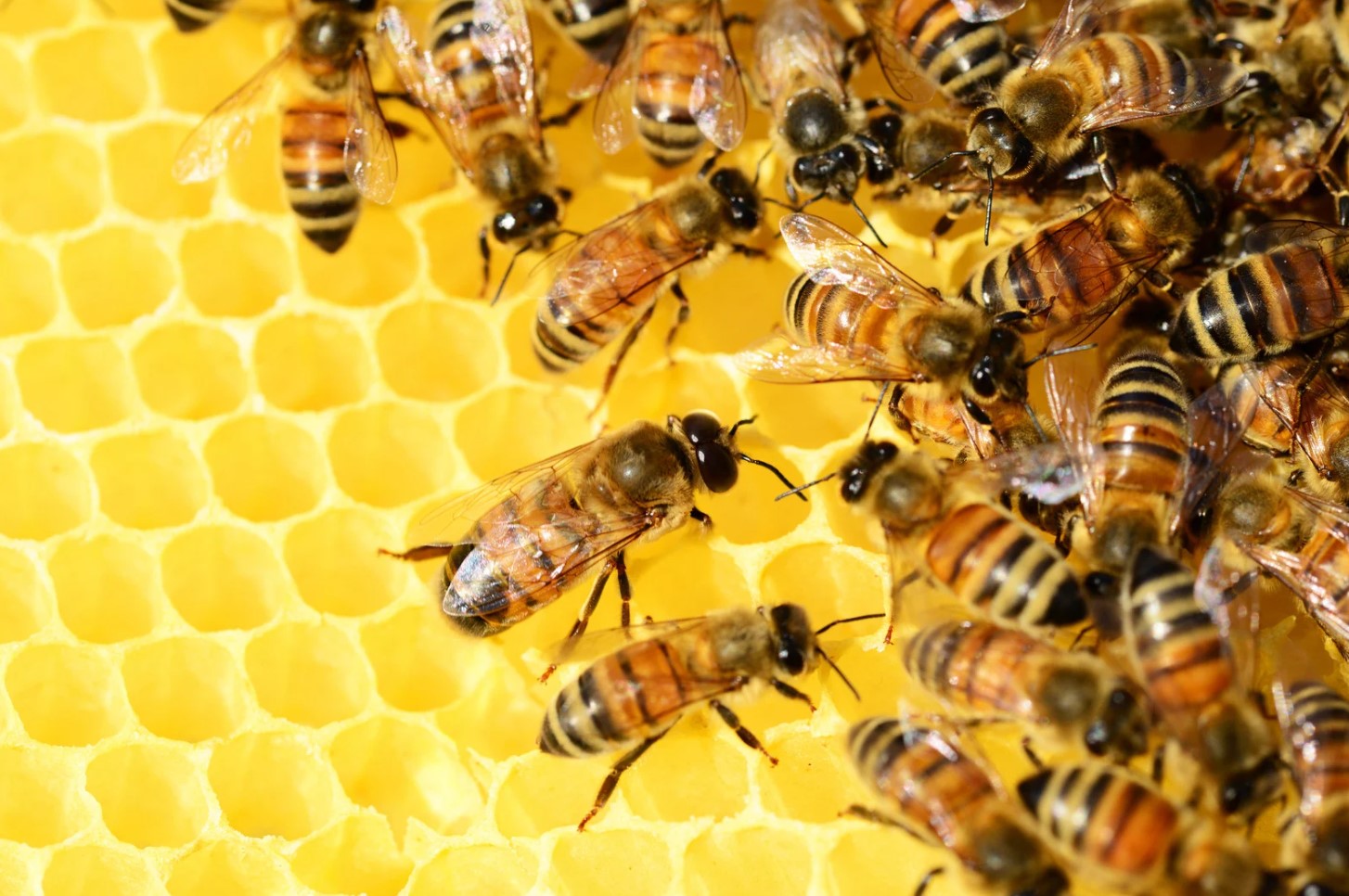
Types Of Bees: Honey, Bumble, Stingless, And More
Bees are fascinating creatures that are essential to the survival of our ecosystem. There are many types of bees, each with unique characteristics and behaviors. Among the most well-known types of bees are honey bees, bumble bees, and stingless bees.
Honey bees, as their name suggests, are known for producing delicious honey. These bees are social insects that live in large colonies led by a queen bee. They play a crucial role in pollinating many food crops and wildflowers. Honey bees are known for their fuzzy, golden-brown bodies and for the painful sting they can inflict.
- Bumble bees
- Stingless bees
- Leafcutter bees
Bumble bees are also social insects that live in smaller colonies than honey bees. Unlike honey bees, bumble bees do not store large quantities of honey. These fuzzy bees are excellent pollinators and help to maintain many ecosystems. They are often recognized by their plump, round bodies that are covered in soft, dense fur.
Stingless bees, as their name suggests, lack a sting. Instead, these bees have a mouthpart called a mandible that they use to bite intruders. They live in large, complex colonies led by a queen bee. Stingless bees are important pollinators and are commonly found in tropical regions. Some species of stingless bees are even kept by humans for their honey and wax.
| Bee Type | Physical Characteristics | Behavior |
|---|---|---|
| Honey bees | Fuzzy, golden-brown bodies; painful stinger | Live in large, social colonies; produce honey; excellent pollinators |
| Bumble bees | Plump, round bodies covered in dense fur | Live in smaller, social colonies; excellent pollinators |
| Stingless bees | Lack stinger; mouthpart called mandible; smaller size than other bees | Live in complex colonies; important pollinators; kept by humans for honey and wax |
Leafcutter bees are another type of bee that are commonly found in gardens and other outdoor spaces. These bees are solitary, meaning they do not live in colonies. Instead, female leafcutter bees create individual nests for their eggs. These bees are named for their habit of cutting small pieces off of leaves to use in their nests. They are important pollinators and are less aggressive than many other types of bees.
These are just a few examples of the many types of bees that exist in the world. Each type of bee plays a unique role in maintaining our ecosystem and providing us with important resources. As we continue to learn more about these incredible insects, we will better understand how to protect and preserve them for future generations.
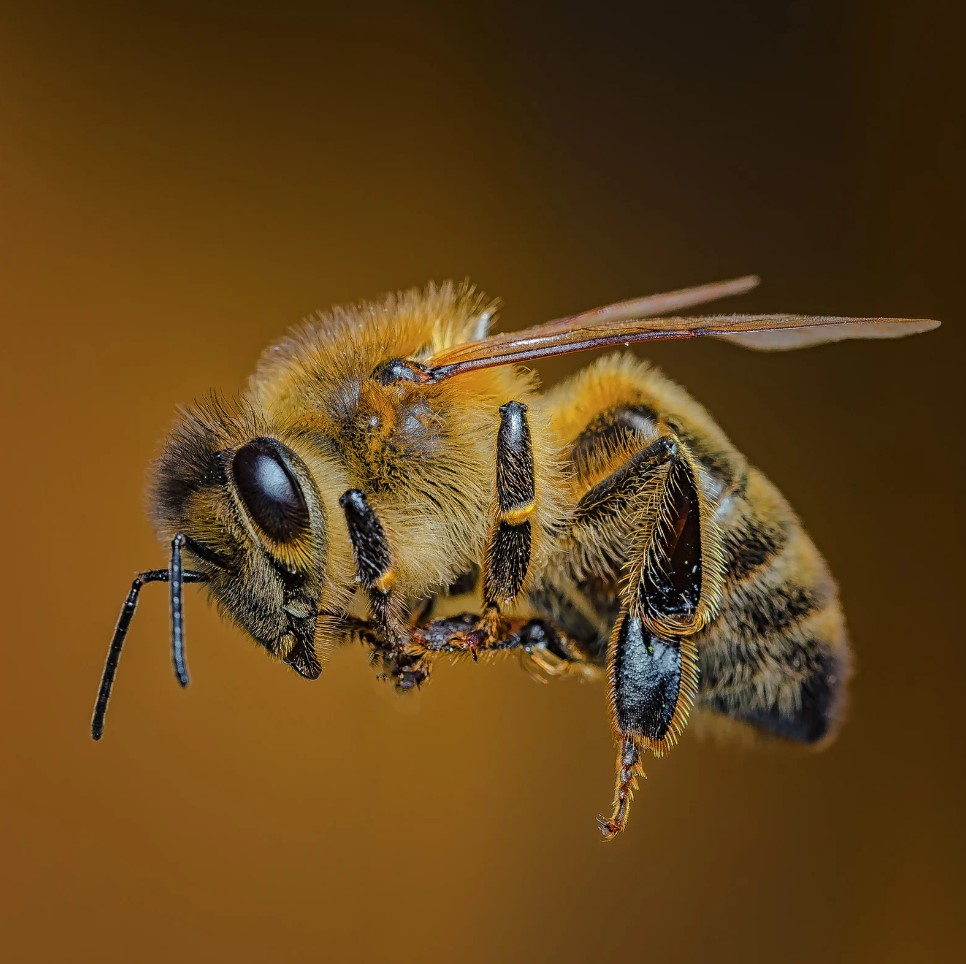
The Wonders Of Bee Pollination And Reproduction
Bees are incredible creatures with a unique ability to pollinate flowers, maintain ecosystems, and produce honey, beeswax, and propolis. However, one of their most fascinating abilities is their role in bee pollination and reproduction. Without bees, many plants would struggle to reproduce. In this blog post, we will explore the wonders of bee pollination and reproduction.
Bee pollination: Bees play a crucial role in pollinating plants, which is essential for the reproduction of many plant species. As bees search for nectar, pollen sticks to the hair on their bodies. When they move from flower to flower, they transfer pollen, allowing flowers to be pollinated and produce fruit, seeds, and often honey.
- Bees pollinate approximately one-third of the food we eat
- Bees pollinate approximately 400 different agricultural types of plants
- Bees pollinate wildflowers, trees, and plants, which helps to maintain biodiversity
Bee reproduction: Honey bees have a fascinating reproductive system that involves drones, queens, and workers. Queen bees are the only females in the hive who can lay eggs, while drones are male bees who mate with the queen. Worker bees, on the other hand, are sterile females who collect nectar and pollen, maintain the hive, and take care of the queen and her offspring.
| Bee type | Role |
|---|---|
| Queen bee | Lays eggs and creates new colonies |
| Drone bee | Mates with the queen bee to fertilize eggs |
| Worker bee | Collects nectar and pollen, maintains the hive, and takes care of the queen and her offspring |
Overall, the wonders of bee pollination and reproduction are essential to maintaining biodiversity and ecosystem health. Without bees, many plants would struggle to reproduce, and the food chain would be disrupted. We must continue to protect and conserve bee populations for the benefit of the planet and future generations.
Bee Products: Honey, Beeswax, And Propolis
Bee products such as honey, beeswax, and propolis have been utilized by humans for centuries due to their numerous benefits. Honey is a natural sweetener that is rich in antioxidants, enzymes, and minerals. Beeswax is a natural wax produced by bees which is used in many products including candles, lip balms, and even as a coating for cheese. Lastly, propolis is a sticky resin-like substance that bees collect from trees and use to seal cracks in their hive to keep it clean and prevent infections.
Honey is produced by bees using nectar from flowers which is then stored in honeycombs. Raw honey is the purest form of honey as it has not gone through any processing that may remove some of its beneficial properties. Raw honey can be used as a natural remedy for sore throats, as an energy booster for athletes, and even as a wound dressing due to its antibacterial properties.
- Raw honey is the purest form of honey
- Raw honey can be used as a natural remedy for sore throats
- Raw honey can be an energy booster for athletes
- Raw honey can be useful as a wound dressing due to antibacterial properties
Beeswax is a natural wax produced by bees which is used in many products. Beeswax is a great natural moisturizer that can help soothe dry skin. It is also a natural emulsifier which means it can help blend ingredients together in creams and lotions. Additionally, beeswax candles are a popular alternative to paraffin candles as they are non-toxic and do not produce harmful fumes when burned.
- Beeswax is a natural moisturizer that can help soothe dry skin
- Beeswax is a natural emulsifier which means it can help blend ingredients together
- Beeswax candles are a popular alternative to paraffin candles
Propolis is a sticky resin-like substance that bees collect from trees which is used to seal cracks in their hive. Propolis is known for its antiseptic properties which makes it useful for treating wounds, burns, and infections. Additionally, propolis has been found to have anti-inflammatory and antioxidant properties which makes it a popular ingredient in many skincare products.
| Properties of Propolis | Benefits |
|---|---|
| Antiseptic | Treats wounds, burns, and infections |
| Anti-inflammatory | Reduces inflammation and pain |
| Antioxidant | Reduces free radical damage to the skin |
In conclusion, bee products such as honey, beeswax, and propolis are not only delicious or useful in daily life, but they also have numerous health benefits. So the next time you use a product with one of these ingredients, you know you are not only benefiting yourself, but also supporting the impressive creatures who produced them.
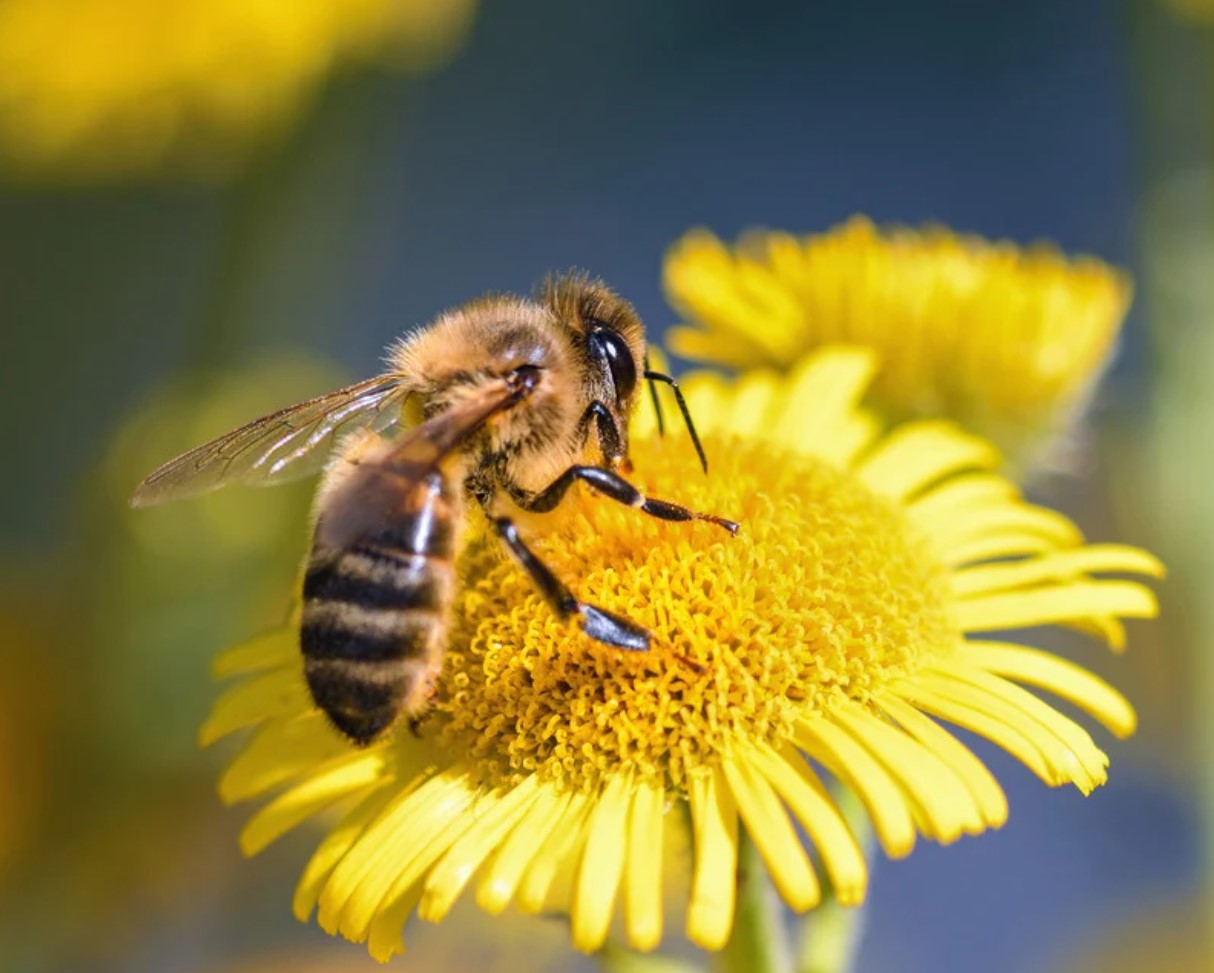
The Vital Role Of Bees İn The Food Chain And Biodiversity
Bees are crucial organisms in maintaining a thriving ecosystem. They play an essential role in ensuring the productivity of various crops and plants through pollination. In fact, these flying insects are responsible for pollinating 1 out of every 3 bites of food we consume. Without them, the food chain and biodiversity would be severely impacted.
Bees are not just important for crop pollination. They also support the growth of wildflowers and other flowering plants in natural habitats. This, in turn, provides habitat and food sources for other animals, such as birds and insects. Bees, therefore, play a vital role in sustaining the balance of nature and ensuring the survival of many species.
- Pesticides pose one of the greatest threats to bees, affecting their health and lifespan. As a result, farmers and beekeepers alike are working to reduce pesticide use and implement more sustainable practices in their respective fields.
- Habitat loss is also a significant concern for bees. The destruction of natural habitats through deforestation, urbanization or conversion of grasslands to farmlands has reduced the number of places where bees can forage for food and build their homes. Conserving habitats and creating green spaces can help address this issue.
- Climate change is another major threat to bees. The changing weather patterns affect the timing of flowering, which can disrupt the synchronization between bees and the plants they pollinate. It can also cause shifts in the distribution of pollinators, leading to a decline in population density.
Overall, bees are essential to the food chain and biodiversity. Understanding the importance of these creatures helps us appreciate their value and inspires us to take action to protect them in our communities and beyond.
The Cultural And Symbolic Significance Of Bees Across History
The Cultural And Symbolic Significance Of Bees Across History
A fascinating aspect of bees is how they have been woven into the cultural and symbolic fabric of humanity throughout history. From the ancient Egyptians who saw bees as symbols of royalty and resurrection, to the medieval Europeans who saw bees as representatives of hard work and industry, bees have held a special place in human imagination and creativity.
One of the most significant cultural associations with bees is the concept of honey. Honey, as a sweet and sustenance-rich product that bees create, has been revered by many cultures across the world. For instance, in Hindu mythology, honey is considered as the nectar of the gods and has been used in many religious rituals. Similarly, in ancient Greek mythology, honey was believed to be the food of the gods.
In addition to honey, the hardworking and cooperative nature of bees has also led to their use as a symbol of teamwork and efficiency in many cultures. For example, Pope Urban VIII used a bee as his emblem to symbolize how even the smallest of creatures, through their collaboration and hard work, can achieve great things.
- Bees have been a popular subject in art as well, featuring in paintings, sculptures, and other works of creativity. For instance, the French artist Pierre-Joseph Redouté created many precise and beautiful illustrations of bees in his botanical artworks.
- Moreover, bee motifs have also been utilized in fashion and design. The French fashion house Gucci featured images of bees in its famous design, while the British fashion designer Alexander McQueen also incorporated bee motifs in his works.
Finally, bees have also been used as symbols of political and societal movements. Perhaps the most famous example is the Napoleonic Bee, which was used to represent the French Empire under the rule of Napoleon Bonaparte, who saw himself as a new emperor in the tradition of the ancient Roman Caesars.
| Conclusion |
|---|
| In summary, bees have played an integral role in human history and have come to embody many different themes and ideas throughout the ages. Whether as symbols of teamwork, sweetness, industry, or resilience, bees will undoubtedly continue to inspire and intrigue humanity for years to come. |
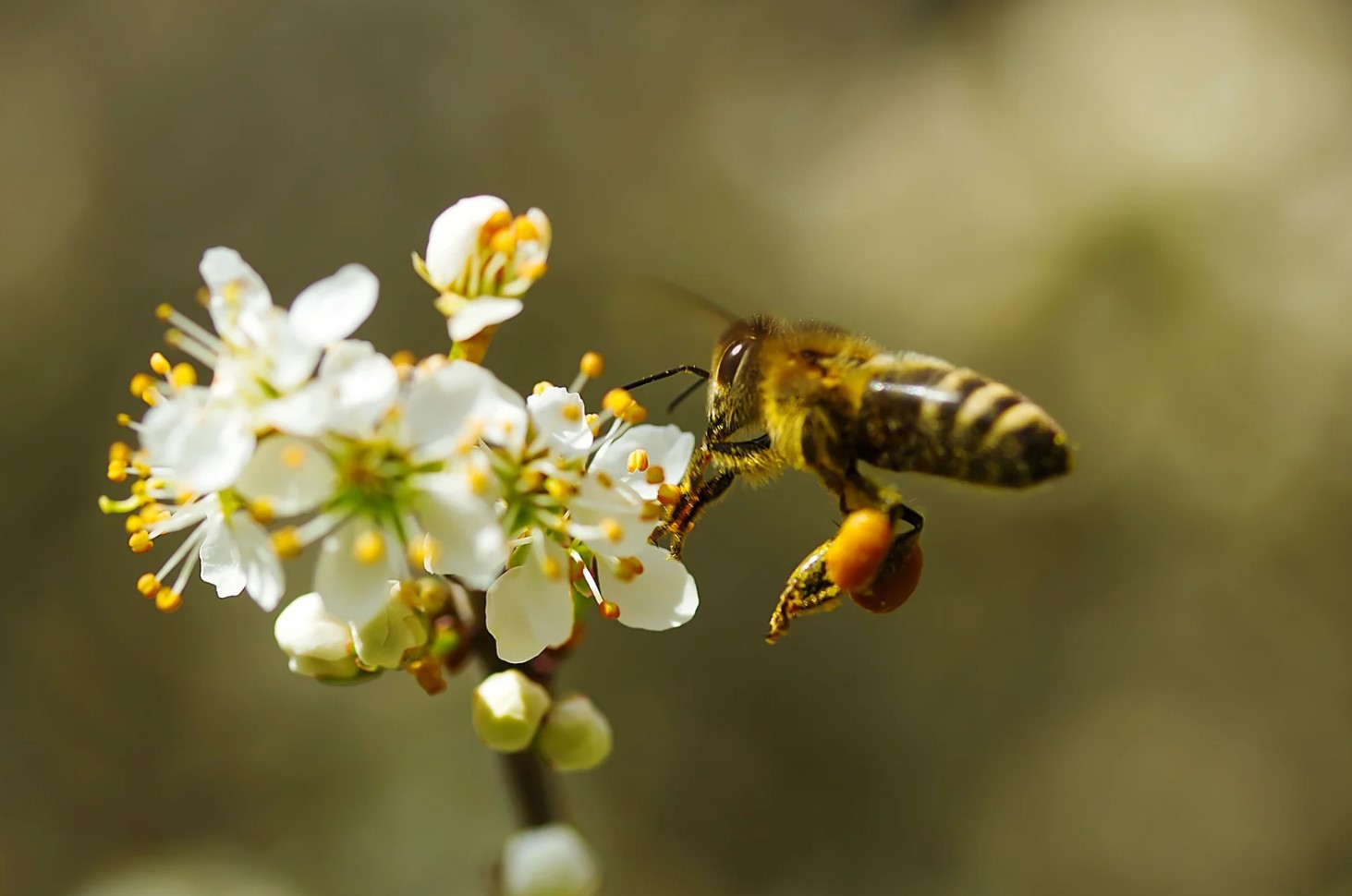
The Status Of Bees İn Today’s World: Threats And Conservation Efforts
The Status Of Bees İn Today’s World: Threats And Conservation Efforts
Bees are important pollinators and play a vital role in maintaining biodiversity and food production. Unfortunately, bees are facing numerous threats in today’s world, which is causing their populations to decline. One of the major threats to bees is the use of pesticides in agriculture. Pesticides are known to kill bees, and their widespread use has contributed to a significant decline in bee populations over the years. Habitat loss is also a major threat to bees. As human populations continue to grow, more natural habitats are being destroyed to make way for urbanization, agriculture, and other developments. This leaves bees with fewer places to live and feed, which ultimately affects their survival.
- Another threat to bees is the spread of diseases and parasites. The varroa mite, for example, is a parasitic mite that is known to attack and kill bees. This mite has been a major problem for beekeepers in recent years and has contributed to the decline of bee populations worldwide.
- Climate change is also having a significant impact on bees. Rising temperatures and changing weather patterns are disrupting the timing of flowering and pollen production, which can affect the availability of food for bees. This, in turn, affects their survival and breeding success.
Thankfully, there are many conservation efforts in place to help protect bees from these threats. One of the most effective measures is the creation of natural habitats for bees. This involves planting flowers, shrubs, and trees that provide bees with food and shelter. It also involves reducing the use of pesticides and promoting sustainable agriculture practices that are bee-friendly. Additionally, beekeepers, scientists, and conservationists are working together to raise awareness about the importance of bees and develop new strategies to protect and conserve them.
| Threat | Conservation efforts |
|---|---|
| Pesticides | Reducing the use of pesticides, promoting sustainable agriculture practices that are bee-friendly. |
| Habitat loss | Creating natural habitats for bees, planting flowers, shrubs, and trees that provide bees with food and shelter. |
| Diseases and parasites | Developing strategies to protect and conserve bees, working together to raise awareness about the importance of bees. |
| Climate change | Developing new strategies to protect bees, reducing greenhouse gas emissions to slow down the rate of climate change. |
Ultimately, the survival of bees depends on our collective efforts to protect and conserve them. By reducing the use of pesticides, creating natural habitats, and raising awareness about the importance of bees, we can help ensure that these vital pollinators continue to play their crucial role in maintaining biodiversity and food production.
The Fascinating Life Cycle And Behavior Of Bees
Bees are fascinating creatures that play a vital role in our ecosystem. They are known for their complex social systems and ability to produce honey, beeswax, and other useful products. But have you ever wondered about the life cycle and behavior of bees?
First, let’s take a look at the life cycle of a bee. A bee’s life begins as an egg, which hatches into a larvae. The larvae is then fed by the worker bees until it transforms into a pupa. After several days, a fully-formed adult bee emerges from the pupa.
Now, let’s talk about the behavior of bees. Bees are highly social insects that live in colonies. Each colony has a queen bee, worker bees, and drones. The queen bee is responsible for laying eggs, while the worker bees gather nectar and pollen from plants to make honey and feed the colony. Drones mate with the queen bee and do not have a stinger.
- Did you know that bees communicate with each other through dancing?
- They also use buzzing to signal danger to other bees.
Bees are also great pollinators and help to fertilize plants by moving pollen from one flower to another. Without bees, many plants would have a hard time reproducing and producing fruit.
| Type of Bee | Physical Characteristics |
|---|---|
| Honey Bee | Brown and yellow striped body, up to 15 mm in length |
| Bumble Bee | Fuzzy body, black and yellow striped or entirely black, up to 25 mm in length |
| Stingless Bee | Small and black, lacks a stinger |
Overall, the life cycle and behavior of bees is truly fascinating. We rely on bees for so much, from pollination to honey production. It’s important that we continue to protect and preserve these amazing creatures for generations to come.
Beekeepers And Their Contribution To Beekeeping Practices And Innovation
The world of beekeeping is gaining popularity as more and more people realize the significance of bees in our ecosystem. Beekeepers are a vital part of this industry and have made significant contributions to beekeeping practices and innovation. These dedicated individuals spend countless hours caring for the bees and ensuring their long-term survival.
Beekeepers play a crucial role in maintaining bee colonies, which are essential for pollination of various crops. They are responsible for setting up beehives and regularly inspecting them to ensure the health and well-being of the bees. They also collect the honey produced by the bees, which is a delicious and nutritious sweetener widely used in food and beverages around the world.
- Beekeepers have also contributed to the innovation of beekeeping practices. They have developed various techniques to manage bees safely, such as using smoke to calm the bees before inspection.
- Beekeepers have also developed ways to protect the bees from disease and other external factors that may harm them. They have developed various treatments and techniques to manage varroa mites, which are a common threat to honeybees.
- Beekeepers also play a crucial role in education and awareness about bees. They often hold workshops and classes that educate the public about the importance of bees and how to care for them. They also provide guidance to aspiring beekeepers and offer support throughout their journey.
Beekeeping is not just a hobby but also an essential practice that contributes significantly to our ecosystem. Beekeepers are dedicated individuals who have made significant contributions to this industry, and their efforts are invaluable in ensuring the survival of bees and the sustainability of our agricultural systems. We must continue to support and value beekeepers and their contributions to our society.
Understanding Bee Communication And Navigation Through Dancing And Buzzing
When it comes to communication, bees have a system that is truly fascinating. They use a combination of tactile, visual, and olfactory cues to convey important information to their hive mates. One of the most remarkable ways that bees communicate is through dancing and buzzing.
The dance that bees perform is called the waggle dance. This dance is used to communicate the location of a food source to other members of the hive. The bee that has discovered the food will perform a series of movements and sounds that indicate the direction and distance of the food. The other bees in the hive will then use this information to fly directly to the source.
- The waggle dance is performed in a figure-eight pattern, with the bee waggling its body from side to side.
- The angle of the dance indicates the direction of the food source in relation to the sun’s position in the sky.
- The duration of the waggle indicates the distance of the food source from the hive.
But bees also use buzzing to communicate with each other. Buzzing is a sound that bees make by rapidly vibrating their wings. Bees use buzzing to signal to each other that there is danger nearby, or to let other bees know that a new queen has emerged.
| Types of Bee Buzzing | Meaning |
|---|---|
| Piping | Used by virgin queens during duels to establish dominance. |
| Crying | Used by nursing bees to communicate with larvae about their development. |
| Quacking | Used by queen bees to announce that they are ready to mate. |
The communication and navigation skills of bees are truly remarkable, and understanding them can provide insight into the behavior of one of the most important creatures in our ecosystem.
The Intriguing Science Of Honey And How It Benefits Our Health
Honey is a sweet, viscous liquid created by bees from flower nectar. This delicious natural sweetener has been used for centuries as a food, medicine, and even as a cosmetic. In addition to being tasty, honey has a range of incredible health benefits that are backed up by science. Here we explore the science behind honey and how it benefits our health.
One of the main reasons honey is so beneficial for our health is due to its antioxidant content. Antioxidants are substances that protect our body’s cells and tissues from damage caused by free radicals. Free radicals are unstable molecules that are generated by various factors such as air pollution, ultraviolet radiation, and even cellular metabolism. The antioxidants in honey help to neutralize these free radicals and prevent cellular damage.
- Antioxidants present in honey are mainly flavonoids, phenolic acids, and ascorbic acid (vitamin C).
- Antibacterial properties of honey come from hydrogen peroxide.
- Honey also contains small amounts of bee pollen, propolis, and royal jelly, which offer additional health benefits.
Another way honey benefits our health is through its antibacterial properties. Honey has been used for centuries for its ability to fight infection and promote wound healing. The antibacterial properties of honey come from the presence of hydrogen peroxide, which is produced by an enzyme added to the nectar by bees. This enzyme breaks down the glucose present in the nectar, producing hydrogen peroxide.
| Honey Type | Antibacterial Activity |
|---|---|
| Manuka Honey | High |
| Acacia Honey | Moderate |
| Buckwheat Honey | Low |
Honey is also an effective cough suppressant. It is particularly effective in treating coughs and related symptoms caused by upper respiratory tract infections. The viscous consistency of honey helps to soothe the throat and reduce irritation, while the antibacterial properties help to fight the underlying infection.
In conclusion, honey is an incredible natural sweetener with a range of health benefits. Its antioxidant and antibacterial properties make it particularly valuable for promoting healing and reducing inflammation. Honey can be incorporated into your diet in many ways – add it to tea, spread it on toast or mix it into your yogurt. So go ahead and indulge in this delicious and beneficial food!
The Future Of Bees And Sustainable Agriculture: Challenges And Solutions.
The Future Of Bees And Sustainable Agriculture: Challenges And Solutions.
Bees play a crucial role in agriculture by pollinating crops that provide us with the food we eat. However, in recent years, bees have been facing various challenges that threaten their existence. Climate change, habitat destruction, pesticide use, and disease are some of the major challenges that bees are currently facing. According to a report by the United Nations, around 40% of invertebrate pollinators, including bees, are facing extinction. This is alarming, and urgent steps need to be taken to secure the future of bees and sustainable agriculture.
Challenges facing bees today
- Climate Change: Today, climate change represents one of the most significant threats to bees. Changes in temperature, rainfall, and weather patterns affect the flowering and blooming times of plants, which can throw bees off their schedules and reduce their access to food sources. Bees are also facing the risk of habitat displacement as their natural habitats are being destroyed at an alarming rate.
- Pesticides: Chemical pesticides are used to protect crops from pests and diseases. Unfortunately, the chemicals used in most pesticides are harmful to bees and other pollinators. Exposure to these chemicals can weaken or kill bees, leading to colony collapse disorder, which is a phenomenon where most of the worker bees in a colony suddenly disappear, leaving behind only the queen and her young.
- Disease: Bees are also facing threats from diseases and parasitic mites that weaken and kill them. For example, the Varroa mite, which is a parasitic mite that feeds on bees, can cause severe damage to bee colonies.
Solutions for a sustainable future
To secure a sustainable future for bees and agriculture, several steps need to be taken. One of the most critical steps is reducing the use of pesticides and adopting alternative pest management techniques such as crop rotation, planting diverse crops, and using natural predators to control pests. Farmers can also adopt alternative pest management practices such as using natural predators like ladybugs to control aphids, which are pests that feed on plants.
Another essential step is to plant more wildflowers and natural habitats for bees to thrive. This will provide bees with critical sources of food and shelter. Farmers can also reduce tillage and use cover crops to improve soil and create habitats for pollinators. Lastly, we need to educate ourselves, our communities, and policymakers about the importance of bees, their role in sustainable agriculture, and the challenges they face. Together, we can work towards securing a sustainable future for bees and the planet as a whole.